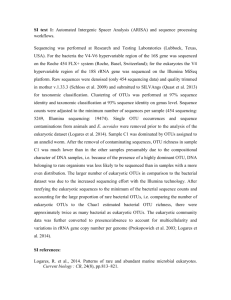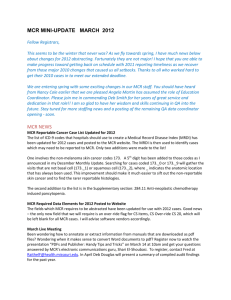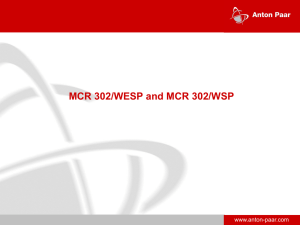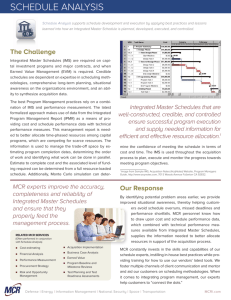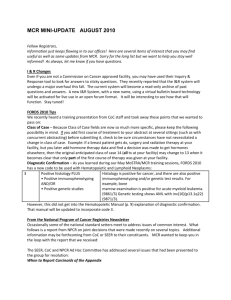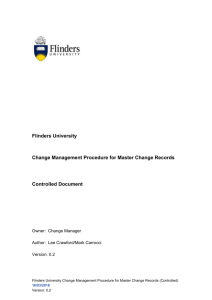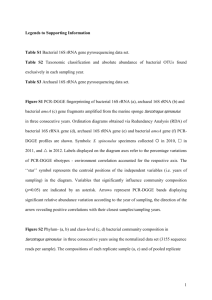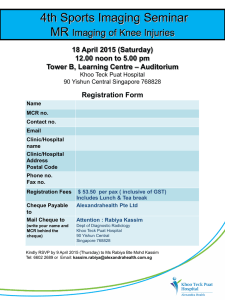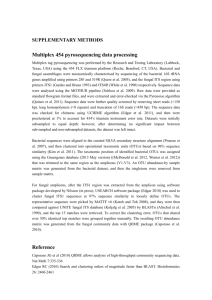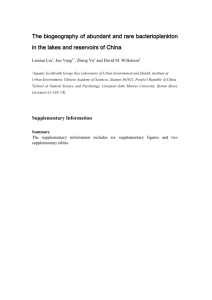Supplementary Information (doc 30K)
advertisement
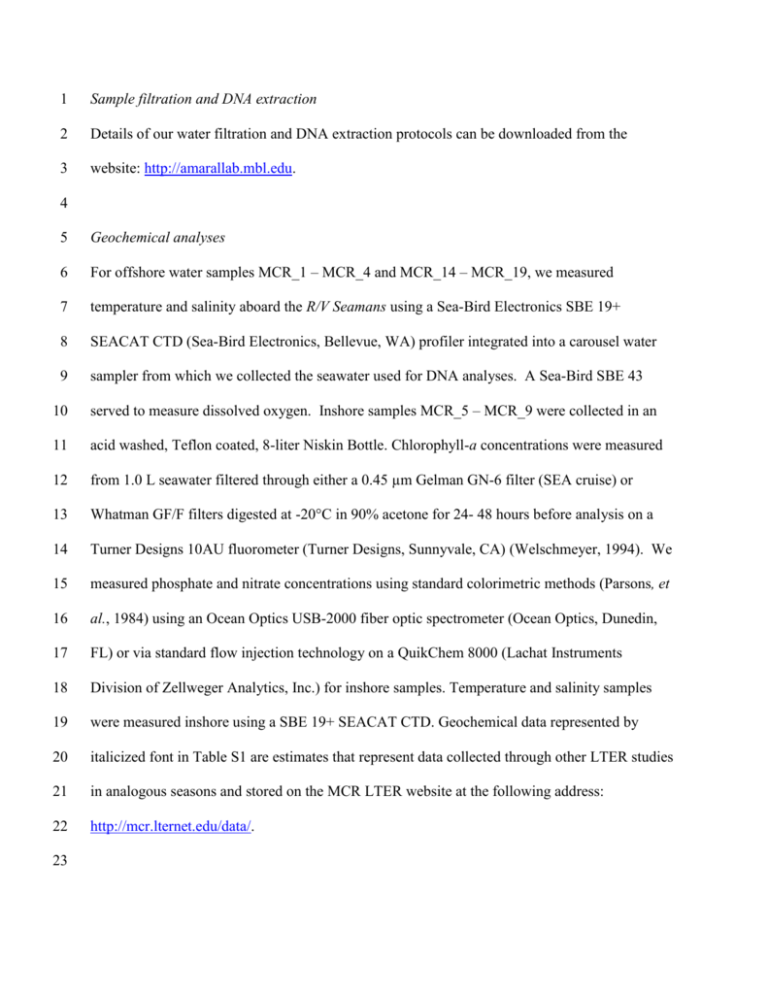
1 Sample filtration and DNA extraction 2 Details of our water filtration and DNA extraction protocols can be downloaded from the 3 website: http://amarallab.mbl.edu. 4 5 Geochemical analyses 6 For offshore water samples MCR_1 – MCR_4 and MCR_14 – MCR_19, we measured 7 temperature and salinity aboard the R/V Seamans using a Sea-Bird Electronics SBE 19+ 8 SEACAT CTD (Sea-Bird Electronics, Bellevue, WA) profiler integrated into a carousel water 9 sampler from which we collected the seawater used for DNA analyses. A Sea-Bird SBE 43 10 served to measure dissolved oxygen. Inshore samples MCR_5 – MCR_9 were collected in an 11 acid washed, Teflon coated, 8-liter Niskin Bottle. Chlorophyll-a concentrations were measured 12 from 1.0 L seawater filtered through either a 0.45 µm Gelman GN-6 filter (SEA cruise) or 13 Whatman GF/F filters digested at -20°C in 90% acetone for 24- 48 hours before analysis on a 14 Turner Designs 10AU fluorometer (Turner Designs, Sunnyvale, CA) (Welschmeyer, 1994). We 15 measured phosphate and nitrate concentrations using standard colorimetric methods (Parsons, et 16 al., 1984) using an Ocean Optics USB-2000 fiber optic spectrometer (Ocean Optics, Dunedin, 17 FL) or via standard flow injection technology on a QuikChem 8000 (Lachat Instruments 18 Division of Zellweger Analytics, Inc.) for inshore samples. Temperature and salinity samples 19 were measured inshore using a SBE 19+ SEACAT CTD. Geochemical data represented by 20 italicized font in Table S1 are estimates that represent data collected through other LTER studies 21 in analogous seasons and stored on the MCR LTER website at the following address: 22 http://mcr.lternet.edu/data/. 23 24 Collector’s curve 25 We calculated OTU accumulation with increasing sequencing effort using the EstimateS 26 program v. 8.0.2 (Colwell, R.K., 2009; http://purl.oclc.org/estimates), implementing the Species 27 Accumulation algorithm, random sequence order and 999 permutations. Bacterial and archaeal 28 OTUs used in this analysis were clustered at the 97% sequence similarity threshold, while 29 eukaryotic sequences (minus those classified as metazoan) were clustered at the 94% sequence 30 similarity threshold. 31 32 References 33 Parsons TR, Maita L, Lalli CM. (1984). A manual of chemical and biological methods for 34 seawater analysis. Pergamon Press: New York. 35 36 Welschmeyer NA. (1994). Fluorometric analysis of chlorophyll a in the presence of chlorophyll 37 b and pheopigments. Limnol Oceanogr 39: 1985-1992. 38 39 Colwell, R. K. (2009). EstimateS: Statistical estimation of species richness and shared species 40 from samples. Version 8.2. User's Guide and application published at: 41 http://purl.oclc.org/estimates. 42 43 Figure legends 44 Figure S1. Depth profiles of environmental data at offshore stations 5 km, 60 km and 130 km 45 north of Moorea. Concurrent biological sequence data collected from surface and 200 m depth. 46 47 Figure S2. Dendrogram of bacterial community similarity among inshore and offshore sample 48 stations using: (a) abundant OTUs (those containing >1.0% of total bacterial sequences); and (b) 49 rare OTUs (those containing <0.01% of total bacterial sequences). Dendrograms are calculated 50 based on relative abundance-based Bray-Curtis similarity matrices of OTUs among inshore and 51 offshore sample stations. 52 53 Figure S3. Non-metric Multidimensional Scaling ordination of Bray-Curtis bacterial group- 54 specific OTUs. Ordination based on samples collected in January 2008 and May 2009. 55 56 Figure S4. Collector’s curves illustrating the number of OTUs observed with increasing 57 addition of sequences to the dataset. Curves based on 999 permutations and random sequence 58 addition order. 59

